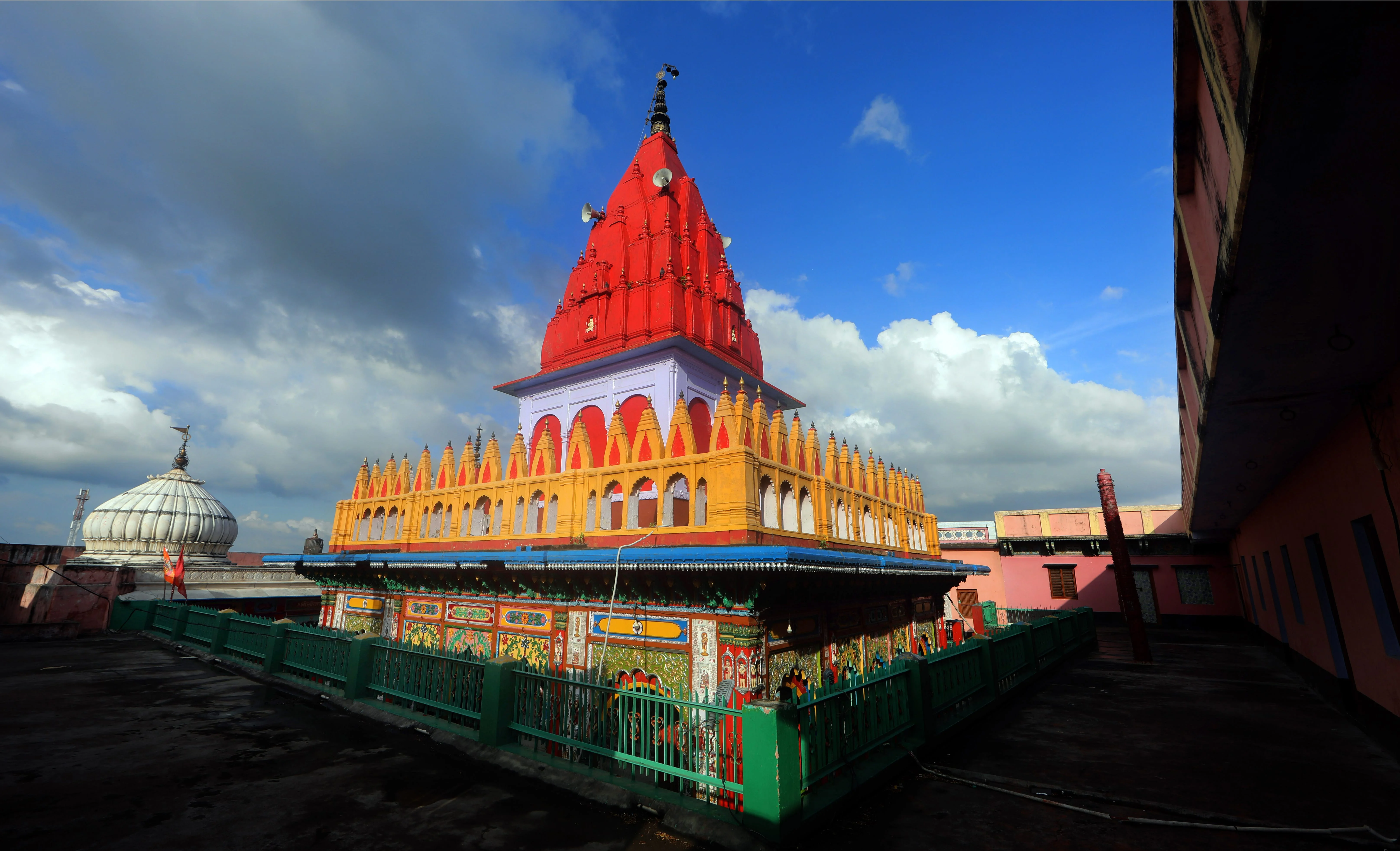
Hanuman Garhi Mandir
Hanuman Garhi Mandir, located in Ayodhya, Uttar Pradesh, is one of the most revered temples dedicated to Lord Hanuman. The temple’s name, “Hanuman Garhi,” translates to "Hanuman's Fortress," and its history is deeply intertwined with Hindu beliefs and legends surrounding the mighty deity Hanuman.According to local legends and traditional beliefs, the site where Hanuman Garhi stands today was originally a cave where Hanuman lived. Hanuman is said to have guarded Ayodhya and its residents from this cave, especially protecting the Ram Janmabhoomi area, which is believed to be the birthplace of Lord Ram. The temple's elevated position on a hill, resembling a fort, symbolizes Hanuman’s role as a vigilant protector, always ready to defend Ayodhya. The temple is historically significant, believed to have been established around the 10th century. It gained prominence and underwent various renovations over the centuries, particularly during the reign of the Nawabs of Awadh in the 18th century. The Nawabs, despite being Muslim rulers, supported the construction and maintenance of the temple, highlighting a period of relative harmony between different religious communities.
- Hanuman Garhi Mandir serves as a symbol of faith and devotion for millions of Hindus, featuring a unique depiction of Hanuman embracing his mother, Anjani, emphasizing his dual nature as a fierce warrior and devoted son.
- The temple complex, accessed by ascending 76 steps, enhances the pilgrimage experience, fostering a deep sense of devotion among visitors.
- During Hindu festivals, particularly Hanuman Jayanti, the temple attracts thousands of devotees who gather to offer prayers and seek blessings, creating an atmosphere filled with devotional fervor.
- Beyond its religious significance, Hanuman Garhi is a center for spiritual learning and cultural activities, hosting religious discourses, bhajans, and cultural events that enrich the spiritual and cultural life of Ayodhya.
- Devotees view Hanuman Garhi as a place of refuge and solace, believing that visiting the temple helps overcome obstacles and fears, seeking Hanuman's blessings for strength, protection, and fulfillment of wishes.
- Named for its association with Hanuman as a stronghold or fortress, the temple's historical roots and significance as a hub of devotion and cultural activity underscore its revered status among devotees, celebrating Hanuman's enduring legacy and spiritual connection.
Browse All
- Hanuman Garhi Mandir
- Ram Janmabhoomi
- Kanak Bhawan
- Nageshwarnath Temple
- Sita Ji ki Rasoi
- Swarg Dwar Temple
- Sri Mani Ram Das Chhawni
- Raj Dwar Temple
- Tretanath Mandir
- Guptar Ghat
- Ram ki Paidi
- Military Temple
- Jain Temple
- Sankat Mochan Hanuman Mandir
- Badi Devkali Devi Temple
- Janki Ghat
- Matgajendra Temple
- Shri Kale Ram Temple
- Shri Ram Janki Birla Temple
- Makhauda Dham
- Raja Dashhrath Damadhi